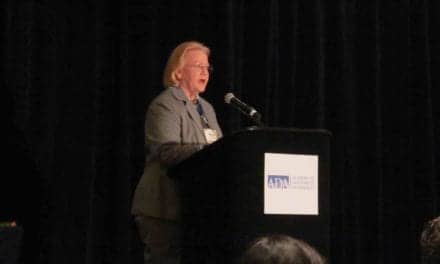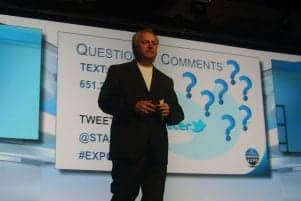New York-based dentist, Sabrina Magid-Katz, DMD, is adept at using American Sign Language (ASL). She uses sign language and special strategies to accommodate deaf and hard-of-hearing patients in her Harrison, NY, dental practice.
Dr Magid-Katz told The Hearing Review that she and her colleagues at Advanced Dentistry of Westchester are sensitive to the challenges faced by deaf and hard of hearing people when seeing a dentist. The dental team makes a concerted effort to integrate the most sophisticated means of communication and comfort for deaf and hearing-impaired patients.
The entire staff at the practice is familiar with lip reading and the accommodations that need to be made for this form of communication—such as speaking clearly and removing a medical mask to make sure the speaker’s mouth is fully visible.
Working alongside a dental hygienist who also knows sign language, Dr Magid-Katz has the opportunity to use ASL on a regular basis at work. She has been using sign language since her middle school years, when she learned it to support a friend.
“I had a close friend who was losing his hearing,” said Magid-Katz. “We began taking American Sign Language night classes at the New York School for the Deaf. I was so intrigued by the beauty of the language and the culture that it became a passion of mine to spread awareness among the hearing community and serve the deaf community.”
Her commitment to serving individuals who are deaf and hard of hearing continued through her years in dental school where during her residency she expanded the grade school dental education and screening outreach program to include the local school for the deaf. She currently extends the community outreach efforts for her dental practice to include a local school for the deaf in order to provide treatment for teachers and also provide students with oral health education and dental screenings.
“It is really meaningful to be able to connect with the children in their language while teaching them about their teeth and keeping their mouths healthy,” says Magid-Katz.
When asked what other strategies she uses in her practice to serve patients with hearing loss, Dr Magid-Katz explained that she and her colleagues make several accommodations for deaf and hard-of-hearing patients.
“Deaf patients tend to be more sensitive to vibration and I have found that they really appreciate our use of non-vibrating technology, such as a laser or air abrasion, instead of a conventional drill,” she said. “Our hearing patients also appreciate that this technology eliminates noise and vibration! It also means that the tooth can be treated more conservatively and patients don’t have to be numbed for fillings, which is appreciated by everyone.”
The dental team also utilizes a computerized speech-to-text converter that converts the dentist’s speech to text on a monitor overhead—the dentist speaks into a microphone, and the words are translated into text on a monitor directly above the patient’s chair when lip-reading and sign communication is not possible.
In addition to using relay calls and email, the practice uses an AOL Instant Messenger (AIM) account with the screen name DrMagidOffice, as a method of communication during office hours. When patients send the practice an IM, the Deaf and Hard-of-Hearing Coordinator at the office can make or check on an appointment or answer questions about insurance. In case of an emergency when the office is closed, deaf patients can reach the doctors directly via text message.
Dr Magid-Katz also uses graphics to enhance her communications. She takes photos before and during procedures, and then uses the visual aids or graphic elements to further explain treatment procedures.
Although there currently is no formal directory or systematic method for finding a deaf-friendly dentist, Dr Magid-Katz advises that people can reach out to local dental practices and ask if the following accommodations are available:
- Multiple methods of communication;
- Technology to replace the vibration in drills wherever possible;
- Use of visual aids and intra-oral cameras;
- Good lighting, and
- Understanding of the need to remove a mask and remain visible when communicating to facilitate lip-reading for deaf and hard-of-hearing patients.
Once people find a dentist (or other health provider) who uses these strategies, or is willing to consider making such accommodations for deaf and hard-of-hearing patients, Dr Magid-Katz advises they help spread awareness of these services by rating local businesses on DeafReview (www.deaffriendly.com).
“The DeafReview website is still new, but a great way to encourage businesses to consider and accommodate the deaf and hard-of-hearing population,” she explained to Hearing Review. “Unfortunately, there really isn’t enough awareness out there yet among dental professionals, and there aren’t many of us focusing on this population. This is why I’ve made it a point to educate my colleagues along the way.”






Thanks for sharing these important and thoughtful suggestions for improving the treatment of deaf and hard-of-hearing patients. I hope more and more practices follow your suggestions. I also wanted to point out that there is now a FDA-approved mask that allows patients to lip-read. Please help us spread the word @safenclear http://safenclear.com